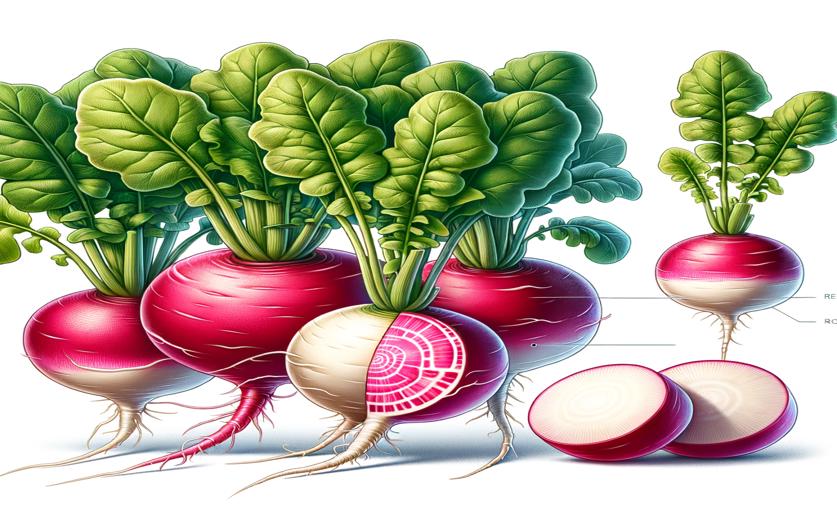
Genetic and Epigenetic Factors Influence Radish Root Skin and Flesh Colors
Jenn Hoskins
17th May, 2024

Image Source: Natural Science News, 2024
Key Findings
- The study by the Beijing Academy of Agriculture and Forestry Science explored the genetic mechanisms behind color variation in radish taproots
- Researchers identified three key RsMYB transcription factors—RsMYB1, RsMYB2, and RsMYB3—as main regulators of anthocyanin accumulation in radish taproots
- These RsMYB genes evolved to perform different roles in various radish subspecies, influencing red flesh and skin colors in different radish varieties
VegetablesGeneticsPlant Science
References
Main Study
1) Sequence and epigenetic variations of R2R3-MYB transcription factors determine the diversity of taproot skin and flesh colors in different cultivated types of radish (Raphanus sativus L.).
Published 16th May, 2024
Journal: TAG. Theoretical and applied genetics. Theoretische und angewandte Genetik
Issue: Vol 137, Issue 6, May 2024
Related Studies
2) Anthocyanins: From the Field to the Antioxidants in the Body.
3) Multiple repeats of a promoter segment causes transcription factor autoregulation in red apples.
4) A MYB activator, DcMYB11c, regulates carrot anthocyanins accumulation in petiole but not taproot.



 3rd March, 2024 | Jenn Hoskins
3rd March, 2024 | Jenn Hoskins